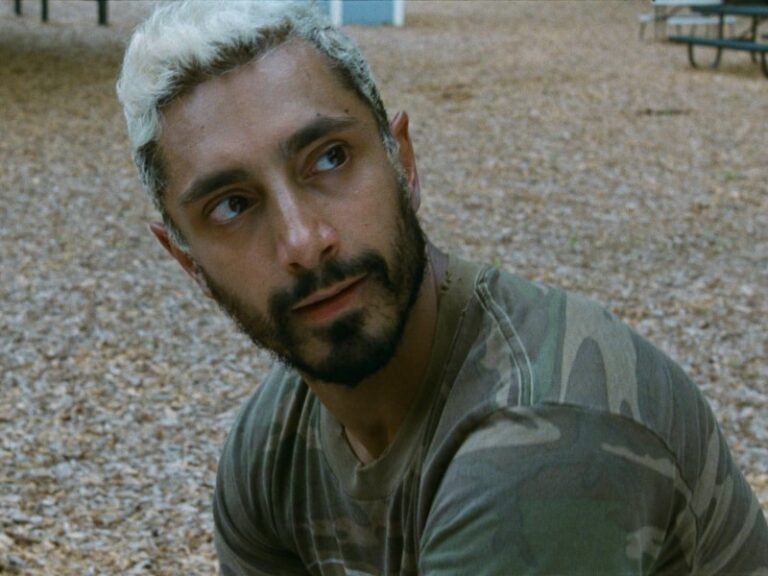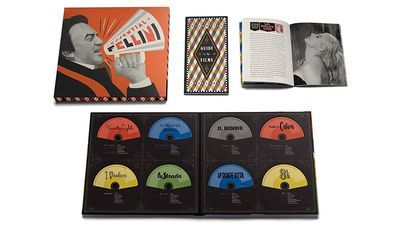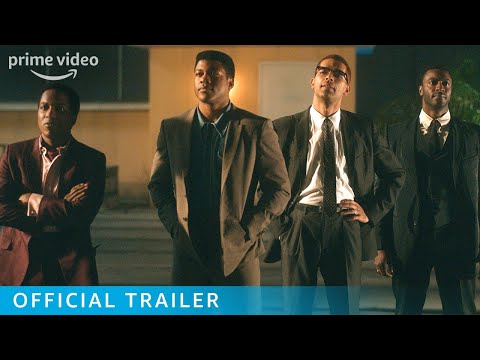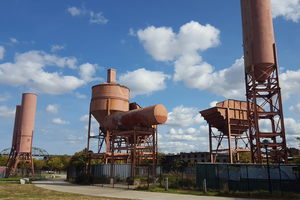Weathering The Storm: Three Theater Owners Talk COVID-19 And Its Impact On Arthouses
COVID-19 has struck many major industries hard, but the toll the virus has taken on cinemas is impossible to ignore. The financial ruin facing many large chains, like AMC and Cineworld, is well-documented, but our arthouses, independent cinemas, and local theater chains have been left to scramble.
Faced with major revenue loss, most of these theaters shifted to virtual cinema offerings. But as COVID-19 continues to ravage the United States, it’s unlikely these theaters will be able to open any time soon at full capacity.
As of Oct. 30, some have begun to reopen. Cinemas remain closed in New Mexico, while in Indiana and Alaska, theaters are open with zero restrictions. The other 47 states lie somewhere in between, where theaters must adhere to social distancing restrictions and limited capacity requirements. As of Nov. 18, cinemas have not reopened in New York City or Los Angeles County.
To understand the toll the pandemic has had on independent cinemas and the hardships these theaters will face going forward, I spoke with theater owner Brett Bossard, who operates local arthouse theater Cinemapolis in Ithaca, New York; Lance Alspaugh, the owner of local theater chain Vintage Cinemas in Los Angeles; and Michele Anderson, the general manager of the Laemmle NoHo 7 in Los Angeles.
None of their theaters have reopened since March, though Cinemapolis has been given the green light.
These interviews have been edited for clarity and combined.
Clement Obropta for Film Inquiry: When did your theater close?
Brett Bossard: March 15th.
Lance Alspaugh: On the very last day that we were allowed to stay open, March 19th.
Michele Anderson: It was a Sunday in March. Maybe the 15th, I think it was? At 9 p.m. the mayor had a press conference and said, “I’m shutting down all theaters as of midnight.” Movie theaters are open every single day of the year, and it hasn’t wavered, you know? Laemmle Theaters opened in 1936 and has essentially been open every day since then until this happened. So it was strange. It was very strange.
And you haven’t reopened yet?
Brett Bossard: No. We are in the process of developing all the protocols to comply with the state’s new guidelines, which include some modifications to our HVAC systems. We’re getting additional guidance on those modifications, and I expect that we’ll be ready to reopen in early December.
Lance Alspaugh: No. Even though our theater in San Diego in Coronado, California — San Diego was released, but the capacity limit is 25 percent, so at my calculations, it just doesn’t seem like that’s worth the exercise and time to do it.
Michele Anderson: No. We have just done some, like, popcorn pop-ups, just to remind people that we exist because we are a small chain. AMC gets headlines. We’re just like, “Hi, don’t forget about us! We have popcorn!”
Did the state help out independent cinemas financially at all?
Brett Bossard: We are a nonprofit, and we were one of 49 arts organizations statewide that received funding from the New York State Council on the Arts. A portion of the CARES Act gave money to the National Endowment for the Arts. Most of it went to organizations that have received funding from NEA in the past. NYSCA, the New York State Council on the Arts, decided to create this pretty simple grant program where we were allowed to apply for a $10,000 sort of emergency grant. We put it toward the cost of our space because we rent this space. We don’t own the building. Luckily, our landlord has been very generous and gave us a break. The $10,000 from New York state came in, I think, in May, so you know, a lot of those initial responses of grant funding and relief funds are sort of dwindling now.
Lance Alspaugh: I think the state has helped out lots of folks. Not just movie theaters. And not just independent movie theaters. But the state has extended an olive branch on a lot of different fronts as far as assistance and programs and rent moratoriums and unemployment — they extended unemployment weeks.
Michele Anderson: Yes. Unfortunately, though, the… actually, I believe it was federal. I’m not sure that California itself did, to be honest. The relief money is great if you’re actually open because it goes to payroll, so you can pay your employees even when you’re not bringing a lot in. But when you’re not open and you can’t even have your employees on, you’re just kind of waiting with this money in an account, going, “Hopefully, we can open soon.”
Have you had to furlough anyone or let employees go during the pandemic?
Brett Bossard: We haven’t yet. I’m hoping that we don’t. We’ve been paying our staff full wages since we’ve closed. One of the things we pride ourselves on is being a certified living wage employer. Even part-timers have been getting wages based on their average weekly hours based on the first 10 weeks of the year… when we were still open!
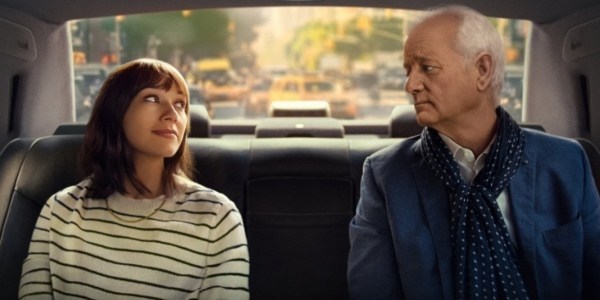
Lance Alspaugh: Everybody’s furloughed. There’s nobody on payroll at all right now. When they won’t let you operate and you can’t even come into the building according to the county health code, there’s just not much to do, is there?
Michele Anderson: Yes.
How is the theater staying afloat financially, besides the support from the government?
Brett Bossard: Virtual cinema has been, you know, a modest revenue generator. I knew when we started it that it wouldn’t necessarily be a big generator of revenue, but it certainly is a great way to keep our audience engaged. I have a reason to continue to send out a weekly newsletter to tell people that we’re doing things here at the cinema. And that more than anything else, I think, is a great value because we’re making sure that those people who are regular attendees and financial supporters of the organization know that we’re still here, still doing things, still trying to fulfill our mission, you know? To provide access to the, sort of… the high points of the art of film to people in the region. As far as real revenue generation, a lot of it has just been donations. In the first week that we were closed, we got a hundred new members. That was really humbling, to know that people valued our place enough to know that closing was gonna put us in danger, and they wanted to do whatever they could to help us weather the storm.
Lance Alspaugh: All the years I’ve done this, which is too many to even remember, I’ve kind of had a “rainy day fund,” so to speak. There’s kind of been an excess of money in case of an emergency or we need to purchase something major, like seats or anything of that nature. And we haven’t had to use it, but now, of course, we have had to use it. And that’s what we’re gonna continue to do until we’re released.
Michele Anderson: Laemmle Theaters has been doing virtual cinema, so that’s been fun. We’ve also just been going to different locations and just opening up for a few hours in a day so people can come and do grab-and-go popcorn and soda and snacks. People want to support us, which is nice. One guy came in and said, “Give me five popcorns. I don’t actually want them.” And I was like, “You don’t actually want them?” And he said, “Nope. Just charge me five popcorns.” It’s nice because we’re a family-owned business because we’ve been in L.A. for so long. It’s very community-driven.
How has the business model of independent theaters changed, do you think, due to the pandemic?
Brett Bossard: Certainly, virtual cinema is taking up the time that I would typically spend on the curatorial part of my job — scheduling the films and finding the right titles that fit our audience this year. So that part is more a pivot than it is a real change. I’ve been talking with other arthouse cinemas and heard the same thing: that given the conditions of the world, it’s likely that even when we reopen our physical spaces, there will be patrons who will not feel comfortable coming back out to the movies. So I think virtual cinema is likely to continue to be a tool that we and a lot of arthouse cinemas use for… maybe forever.
For many single-screen or duplex-screen theaters, it really is providing them with additional screen space, you know? It’s allowing them to share more films with their audience than they’ve been able to do before. So it’s kind of exciting that way, and it’s been much smaller distributors that have been making their films available for virtual cinemas. So in many cases, these are films that likely wouldn’t have been granted the limited real-estate resources we had when we were screening films IRL here in the cinema. So it’s really allowed us to branch out a little bit, you know? I think there are a lot of opportunities in this business that we are in now, of making lemonade out of lemons, that will likely change the ways we do business even after the doors are open again.
Lance Alspaugh: These virtual screenings have kind of waned of late — I don’t know if you’ve noticed, but they’re not as fruitful as they were several months ago. The numbers haven’t panned out for us to jump into that pool, as far as the virtual screenings. Also, I don’t necessarily want to be an advocate for people to get used to watching things on their computer, or their iPhone, or television because that’s not really the business I’m in. So I’ve steered clear away from that. I think if I was 10 or 15 years younger, I might have been a little more adventurous. But I’ve — and I don’t like tooting my own horn on anything — but I can safely say I’ve done so much in the movie theater world that I just didn’t think it was the right thing to do at this particular moment. We actually have a client called The Secret Movie Club, and he does his thing here normally, but of course, now that we’re closed, he’s doing his stuff outdoors in parking lots. He’s just all up for the challenge. And he knows what he’s doing. And those outdoor screenings are successful when they’re working, and those drive-ins… you know, I think the Paramount drive-in we have here in Los Angeles is one of the No. 1 theaters right now in the country.
Michele Anderson: Virtual cinema is pretty much it. Drive-ins are difficult because you need a whole lot of equipment. Most of our locations are in malls or near malls, so it’s not like we just have a big parking lot where you can, you know, screen something against a wall. But we’re trying. I know that Laemmle Theaters partnered with somebody in Torrance to kind of do a drive-in. We were scheduled to open a new location in Newhall, in Santa Clarita. So we’re trying to work with the property managers there to see if maybe we can do a little outdoor event.
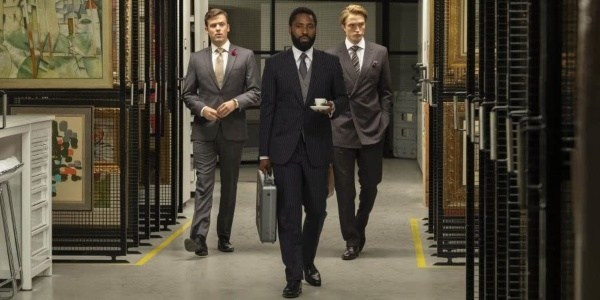
A few months ago, Tenet came out, and it was touted as this “savior” of cinemas. AMCs and Regals were starting to open, and there was this push here and overseas in the UK to “return to the way movies are meant to be seen,” about Tenet and going to see it in these big-screen megaplexes. Do you think that kind of erases the role of independent cinemas?
Brett Bossard: No, because I think the role of independent cinemas is different than going to a chain, commercial, multiplex, or megaplex. I do, honestly, feel like us small arthouses — a lot of them are nonprofits, like us — are actually better prepared to deal with the changes that are gonna be required to operate post-pandemic. I think the chains are gonna struggle more from their reliance on tentpole blockbusters and their reliance on a relationship with their audiences that is far less personal than ours. We can make direct appeals with people we know because we see them week after week, and we can really sort of hone in on their love of the experience of coming to the movies and engaging with film in a way that is really quite a bit different than how Regals and AMCs pitch their experience to their patrons. Arthouses each serve their community in different ways.
Lance Alspaugh: Let’s just take these large companies — AMCs, Regals, and others. When you have 25, 30, 20, 15 screens to fill, and over the next few years, the menu of film is not going to be as plentiful as it used to be — and by the way, even before the pandemic, the menu of film had waned from what it was even 10 years ago. Our film buyer books a lot of movie theaters, and I say, every month, “How are you filling these 12-screen megaplexes? What are these people doing?” And he would say, “They’re just doubling the movie up on three, four, five screens.” So the answer to the question is, I think you’re gonna see a lot of those giant megaplexes go away. That might be a good thing for the people who have smaller venues — perhaps even the independents have a triplex or six screens. I don’t know if you need many more screens than that anymore. Maybe less is more.
Michele Anderson: I think the way movies are supposed to be seen is on a very large screen. Filmmakers wouldn’t put that much effort into making it look great if it was just meant to be on an iPad or something. So in that aspect, I do agree. Is it going to be a full house again? Not for a while, I don’t think. For however long, we’re gonna be opening theaters in a way that’s safe, which means masks and fewer people and social distancing.
How do you see the shockwaves from the pandemic affecting moviegoing, even in the next couple of years?
Brett Bossard: A couple of years out is hard to say. Once there’s a vaccine, I think, distance seating might be a thing for a while — like, years, even. I think the basics, though, of getting popcorn, wanting to have concessions — in many states, wanting to have a beer or a wine when you go to the movies… I don’t think that’s gonna change.
I look back on the way our country handled the pandemic in 1918, you know. There were certainly live performances and early theater, movie theater activity. Vaudeville, certainly, was a major component of daily life for people. We still had theaters after the country came to grips with the changes that needed to happen to fight that virus. So I’m not as worried about that. What I think a lot of people are realizing is that maybe the economics of commercial cinema were pretty tenuous.
Coming out of this pandemic, maybe businesses will close, and maybe the relationships, I think, between distributors and movie theaters will need to change, especially for the big commercial titles. Disney was demanding 60, 70 percent of the tickets on their big Star Wars titles and things like that. And if you could only fill a house halfway and sell limited concession items, that makes it kind of impossible for commercial theaters to continue to operate the way they’d been operating the last 20, 30 years. What would be great is if more mid-budget dramatic cinema was made again for theatrical distribution. Theaters like ours have been playing those kinds of movies for a long time, and I think there might be more of an appetite to make those kinds of movies because they’re a lower risk in the long run.
Lance Alspaugh: I’m not an adversary for these big-screen extravaganzas. But it is interesting that some of the best films I’ve seen have been on Netflix. And there’s a Bill Murray movie that’s coming — the Sofia Coppola film. On the Rocks is something that, under normal circumstances, we would play. And it’s on Apple TV+, and it might be due to the pandemic, but my suspicion is that it would be streaming regardless of whether the pandemic was here or not. I think that was where it was going to always be. I worry about the studios — the people that run them all want to keep their jobs. Taking too many risks can jeopardize that. So I’ll tell you, the next one or two years, smaller movie theaters and independents might benefit from this, but the real trick will be getting through the one or two years. Having to sustain and survive and tap-dance and get through it is not gonna be a pleasant time.
Michele Anderson: I think that people will probably — assuming we can go back to more normal times — I think that people will probably crave the movies, you know? Just seeing the customers line up for popcorn, I don’t wanna make light of it, but… it’s just popcorn! But they’re desperate for it because they miss the normalcy, you know? And they miss being allowed to have that. As everyone knows, all the streaming channels came out and the theaters started to hurt, but I think now that everyone has been forced to stay home and only watch on their streaming channels, they will crave going out to movie theaters because they can again. That’s hopefully what happens.

What are some films that the theater is showing now, or has shown during quarantine, that you’d recommend people seek out? Or what have you seen during quarantine?
Brett Bossard: One I’m excited about is this film called The Dark Divide. It’s based on a real story of this sort of famous wildlife photographer and popular scientist and writer, and it’s his effort to go on this big camping hike through the wildlands of the U.S., specifically, I think, to find species of butterflies, but David Cross is in it. He plays the guy who wrote the book, and obviously, it’s sort of a misadventure. Previously, there was this film called Lucky Grandma that we showed. It was this great film from this first-time feature filmmaker, all set in Chinatown in New York City, and it was really fun.
Lance Alspaugh: I’m sorry to say that I haven’t seen very much. The only film I’ve seen recently is The Trial of the Chicago 7. It’s a really well-made movie with an unbelievably big cast — a movie cast, by the way. But yet, it’s on Netflix. And you could argue that it’s on Netflix right now because the pandemic is here. It’s targeted to the Netflix audience, so when you have a situation like that, it’s gonna be very difficult to get people out to see this very well-crafted movie in a movie theater when they know all they have to do is turn on Netflix and see it.
Everyone likely has their own independent cinema or arthouse in town or in their area that’s struggling right now. How can people support their local independent theaters?
Brett Bossard: We’re with local independent theaters across the country as a part of the Art House Convergence, which is a sort of loose association of independent cinemas that are community-minded and mission-driven like us. Most of them are doing virtual cinema offerings. So you know, search for the website of your local arthouse. I’m sure they have something that you can watch there. And because 70 or 80 percent of the arthouses in the country are nonprofit, certainly those donations and contributions are going to be really vital. So if you have those resources, make sure to make those donations so that the art of film is still going to be alive in your community when the pandemic is over.
Michele Anderson: Our virtual cinema is all on laemmle.com if you’d like to check it out. We have gift cards and premiere cards, and if you just load up money on those, that’ll help us, you know? Really, it’s a situation where anything will help any business that has had to shut its doors.
Film Inquiry would like to thank Brett Bossard, Lance Alspaugh, and Michele Anderson for their time, insight and taking the time to speak with us.
Does content like this matter to you?
Become a Member and support film journalism. Unlock access to all of Film Inquiry`s great articles. Join a community of like-minded readers who are passionate about cinema – get access to our private members Network, give back to independent filmmakers, and more.
Join now!
